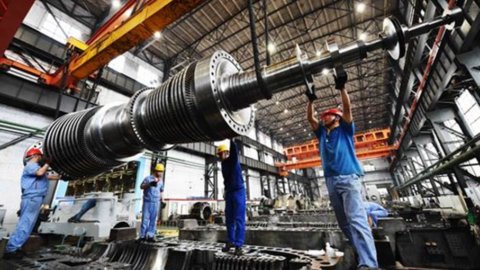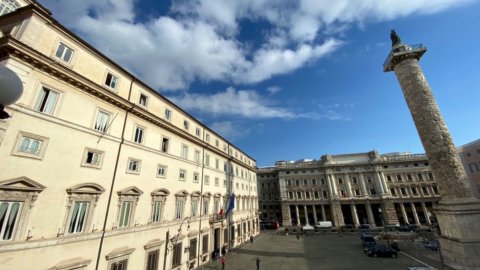In 2015 district exports grew for the sixth consecutive year, reaching the record figure of 94,6 billion euros, more than double the lows reached in 2009. This was revealed by the usual Monitor of industrial districts published by the study center of Intesa Sanpaolo: 61 districts, out of a total of 147 monitored, recorded new all-time highs last year.
Furthermore, the trade surplus widened again, reaching 62,7 billion euro, approximately two-thirds of the entire Italian manufacturing surplus. The centrality of district territories is even more evident if one looks at a longer time horizon: in 14 years, between 2002 and 2015, the trade surplus generated by the districts amounted to 734 billion euros. This is an extraordinary result, made possible by the presence of production chains which, in many cases, have remained intact, managing to offer undoubted competitive advantages and maintain added value in the area.
It has been three years since the export of the districts shows a growth of 4% approximately: +4,8% in 2013, +4% in 2014, +4,2% in 2015. In the years following the complete recovery of what was lost in the 2009 crisis (which occurred between 2010 and 2012), exports district has increased overall by 13,6% (between 2012 and 2015). What is especially striking is the consistency of the results. In the same period the progress of the German district sectors did not go beyond +2,7%; that of Italian manufacturing stopped at +6,3%. District productions are therefore confirmed as highly competitive on international markets and the driving force behind the growth of Italian manufacturing.
They also showed a good growth rate 22 technological hubs monitored which closed 2015 with an increase of 5,9%, accelerating compared to the previous two years, thus reaching a new all-time high: 28,1 billion euro. The picture is positive both for the biomedical (+11,5%), pharmaceutical (+5,8%) and aeronautical (+0,6%) poles, which also closed 2014 with growth, and for the ICT poles that rebound (+8,5%), after the difficulties of the past few years.
Among the industrial districts, the areas specialized in stood out building products and materials (+7,8% in 2015), agri-food (+7,3%) and furniture (+6,4%). Good news also comes from the engineering districts which, after a weak start to the year, showed signs of acceleration in the following quarters, managing to close 2015 with an increase of 4,2%, more than double growth compared to both of the sector outside the district borders, and of German competitors.
Less brilliant, but still positive performances were recorded by the fashion and household appliances districts which, after an excellent 2014, showed a slight increase in exported values: +2,2% for consumer goods and +3,4% % for fashion intermediate goods; +1,3% for household appliances. Triveneto and Mezzogiorno are the most dynamic district territories in the country. The Triveneto districts have once again become the engine of Italian growth on foreign markets, thanks to the affirmation of important supply chains that have been able to acquire undisputed international leadership.
They stand out for growth and size Belluno eyewear, the tannery of Arzignano, the instrumental mechanics of Vicenza, the prosecco of Conegliano-Valdobbiadene, the furniture of Livenza and Quartier del Piave, the sweets and pasta of Verona and the meats of Verona. The districts of Southern Italy were also very brilliant, registering an increase in exports of 2015% in 8,3, approximately double the Italian average. Puglia and Campania, the two southern regions with the highest district presence, were the driving force, reporting an increase of 10,8% and 6,9% respectively. These regions have been rewarded for their agri-food specialization and the excellent results achieved by the mechatronics of Bari In the other regions, the goldsmith's of Valenza, the tiles of Sassuolo and the engineering of Lecco were highlighted, respectively first, third and fourth Italian district for growth of exports in absolute value.
For the second consecutive year, district exports were driven by advanced markets: the results obtained in the United States stand out in particular, where generalized growth was recorded, driven by the districts of the fashion system, agro-food, construction products and materials and mechanics. The recovery of some important European markets, such as the United Kingdom and Spain, then consolidated. In contrast to the Italian manufacturing average, district exports returned to growth on the Chinese market (+5,7% in 2015 vs. -0,9% for manufacturing), showing signs of acceleration in the second half of the year. The fashion, furniture and agro-food system are the district sectors that have most managed to grow on this market, confirming the growing growth potential offered by this market for Italian consumer goods.
However, growth in new markets was held back by difficulties encountered on the Russian market, which continued to be affected by the ruble crisis and the collapse in oil prices. In 2016 district exports should show a growth rate substantially in line with or slightly higher than that observed in the last two years. In fact, the international scenario sees stable global growth. However, geopolitical risk factors and those linked to the turbulence of the equity markets remain. Districts will maintain better dynamics than non-district areas, also favored by a more structured presence on foreign markets, with more widespread use of internationally registered trademarks and greater roots in markets with foreign subsidiaries.
However, much will depend on the evolution of demand Germany and France which remain the first two commercial outlets of the districts. Consumption in these two markets will continue to grow at a good pace due to the drop in oil prices and very favorable financial conditions. On the other hand, uncertainty remains about the prospects for investment growth.





